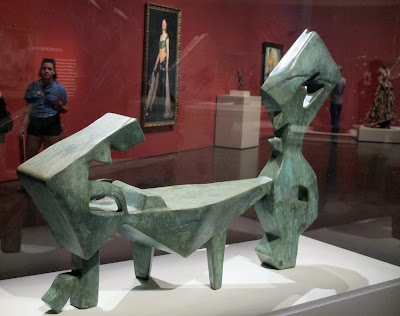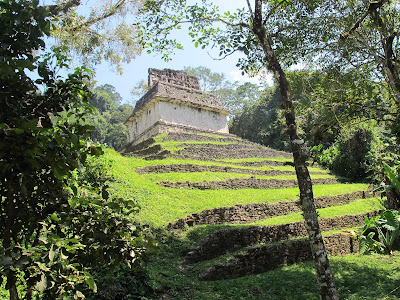Last Thursday was the opening of her "Denver Lifestyle" exhibition at the aBuzz Gallery in Denver's RINO district.
Under Construction - 35" x 28" - is one of my favorite pieces in her show. Living in the heart of downtown, her view from her studio was that of the many construction sites involving the growing skyline of Denver. I am attracted to the abstract manor in which the tapestry is laid out and the colors. I feel like it is the silver titanium of that which adorns the facade the Denver Art Museum reflecting the afternoon sun.
Bronco Mania - 44" x 30". Jean nailed this one! The Broncos being the champions of the 2016 Super Bowl, cheering fans were everywhere. And living downtown as she does, it was a mob scene of orange and blue.
Out on the Town - 45" x 68" - One usually sees couple clad in jeans and t-shirts out on the town but this one particular couple struck Jean as it was their first date, all decked out. A trip to the Denver Art Museum on day gave her the inspiration for Out on the Town where see saw a piece of pottery that was adorned in an abstract black and white design.
Farmer's Market - 44" x 29" - Denver's farmers markets are many and they showcase Colorado's local produce, flowers, bakery goods, tamales... And by mid-morning the clientele is pretty diverse from the young millennial couple with their one or two dogs in tow to some that look like they just crawled out of bed to the group cyclist adorned in their full biking gear advertising some biking line to the preppy couple with their designer shopping bags.
Dancing For Joy - 40" x 64" - While walking down the pedestrian 16th Street mall, there was a group dancing with no inhibitions and having a great time. The colorful Cinco de Mayo celebrations in Denver inspired Jean to give this dancer this vibrant attire.
Mall Ride - 40" x 30" - Riding the Sixteenth Street Mall bus is an experience. You think you see a diverse crowd at the farmer's market, think again. Throw in a man in a business suit, a kid with dreadlocks with his skateboard, a mom with her kids, sports fans on their way to a Rockies game...
Over The Hill - 30" x 36" - One of Jean's nature pieces. There is a little humor to this piece in that the hikers have just gone over the hill and with their walking sticks and the manner in which they are walking, they too like they are on their way of being "over the hill".
Please check out Jean's textiles showcasing Denver Lifestyle at the aBuzz Gallery. I have touched on just a few of her pieces and it certainly represents our Colorado lifestyle.
To view more of her textiles, go to her website at www.jeanherman.com.
Artists Talk: Saturday, September 17, 1 - 2pm
aBuzz Gallery
3340 Walnut Street
Denver, Colorado
For a private appointment: 303-596-4685















































